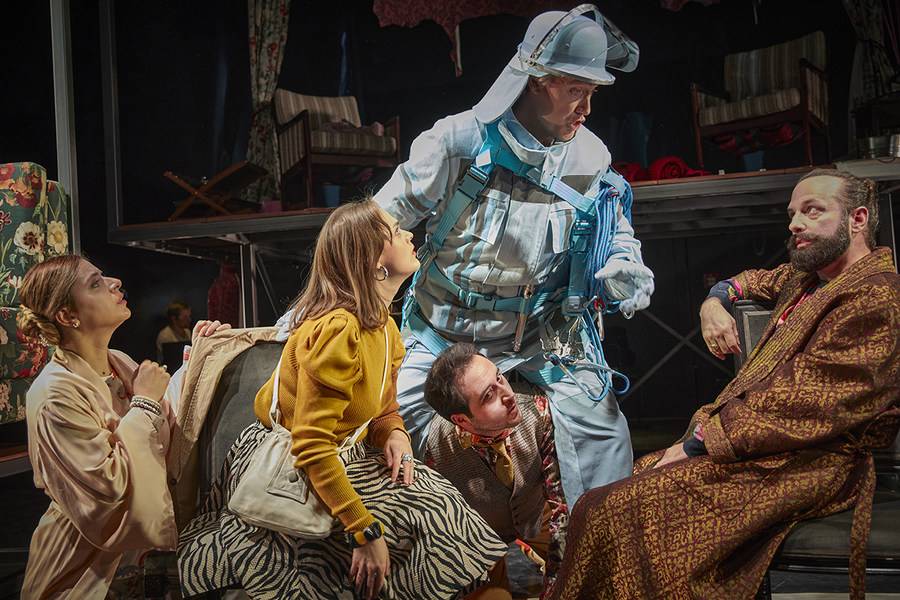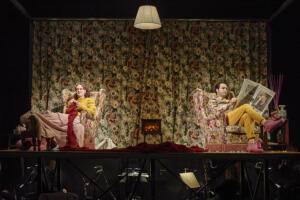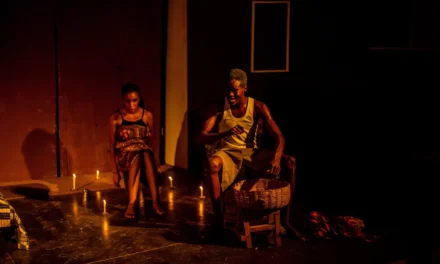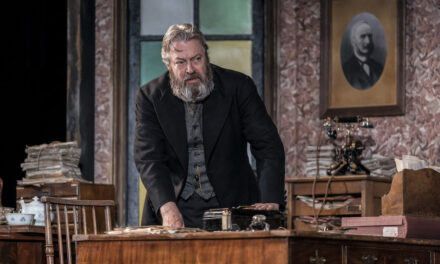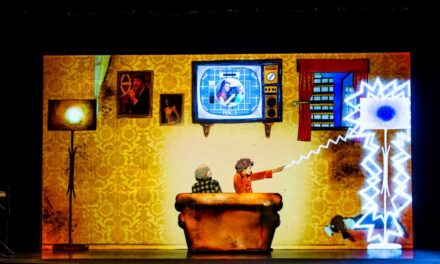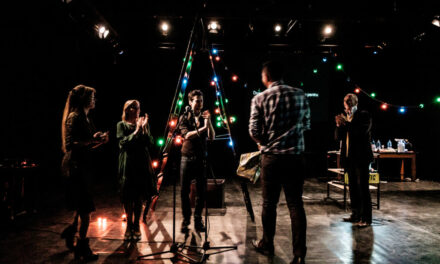There are some myths about the opera that are not true. Firstly, that young people do not like opera. Secondly, opera audiences hate contemporary operas. If you think that both statements are false, you must have been to the Semper Zwei to see The Bald Soprano, an opera by the composer Luciano Chailly based on the eponymous Ionesco’s play. And Josef Heinzelmann translated the libretto into German.
There is a lot of evidence that supports these ideas against both myths in this case. On one hand, tickets sold out for all the performances. In addition, it was difficult to get a seat for the introductory talks before the show which were held in the upper foyer of the theater. On the other hand, the average age of the audience was around thirty-something. What’s more, jumpers, sneakers or boots and jeans were the dress code at the premiere, it does not matter how old the spectators could be.
It is true that the opera was in a little theater. Specifically in the 80s building extension of the Semperoper. Consequently, it is easier to sell out than bigger ones. Nevertheless, it is a chamber opera that needs a little string orchestra and only a cast of six singers. They are enough people to play three pairs of lovers. Subsequently, it is not an expensive production and the tickets are not either.
As people who have seen the play know, the main characters are a couple, Mr. and Mrs. Smith, who are comfortable in their cozy home. The wife is knitting while her husband is reading the newspaper and drinking whiskey on the rocks. This quiet and bourgeois scene is interrupted by two friends who flirt in the lobby, as they were singles, until they realize they are partners and married.
Is it not absurd enough? It is not, according to the playwright, who also introduces a handsome firefighter looking for fires to extinguish. Furthermore, he is an old boyfriend of the maid of the Smiths, and she still loves him.
In other words, it is a parody of the bourgeois vaudeville and its romantic idea of love. A genre that was very widespread in the XX century when this play was premiered. What’s more, it has never lost its popularity as anybody can confirm checking billboards in almost any country.
So, the important question is, can contemporary music be appropriate for transforming an absurd comedy into an opera buffa? It is highly probable that most of the operagoers and professionals probably answer negatively.
However, The Bald Soprano shows that they are wrong. Its atonal and non-melody music score does not prevent viewers from bursting out laughing, just as they do when they watch the play. As well as increasing the intrigue and the interest in what is happening on the stage.
As a matter of fact, the stage director, Barbora Horáková Joly, who has realized this issue, relies on the music score to do her job. For example, the way that she introduces typical slapstick comedy features when the cast does not sing. Or how she makes singers travesty romantic and bel canto repertoire ways of being on the stage according to the score.
In short, it could be said that The Bald Soprano is a feat for the audiences. People who do not think if the opera is contemporary or not. Or if the plot is absurd or not. They sit, listen, laugh without prejudices. Furthermore, they give a loud and sincere applause to this ironic comedy about love because it has provided them with a blissful evening. As a result of their answer, the myths about contemporary opera and young people can be challenged.
This post was written by the author in their personal capacity.The opinions expressed in this article are the author’s own and do not reflect the view of The Theatre Times, their staff or collaborators.
This post was written by Antonio Hernández Nieto.
The views expressed here belong to the author and do not necessarily reflect our views and opinions.

